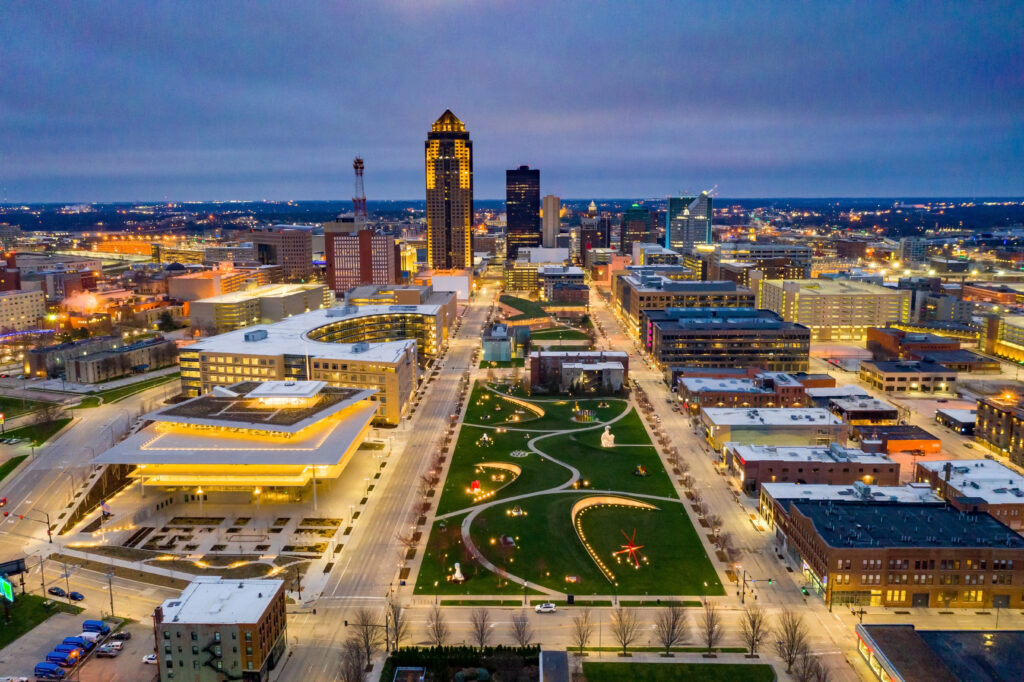What direction should immigration reform take?
Coalition of CEOs, mayors recommends policy of 'tall fences, wide gates'

Gather a group of Americans and ask them their views on immigration policy, and you’re sure to hear a wide range of opinions, and maybe spark a few heated arguments.
One thing Americans do agree on: They’re overwhelmingly dissatisfied with the current immigration system, says pollster Frank Luntz. Author of the New York Times best seller “What Americans Really Want … Really,” Luntz visited Des Moines recently to participate in an immigration reform panel discussion co-hosted by the Iowa Immigration Education Coalition and the Partnership for a New American Economy.
“The consensus from a national survey is that a solution is needed that is responsible, complete and that is a national approach,” Luntz told a group of about 100 business people who participated in the breakfast event held Sept. 21 at the Des Moines Marriott Downtown. On the panel were executives from several major employers: Wellmark Blue Cross and Blue Shield, Mercy Medical Center – Des Moines, Iowa State University and Fisher Controls International LLC in Marshalltown.
A smarter system
Luntz’s research firm, Luntz Global LLC, conducted the survey last fall for the Partnership for a New American Economy, a coalition of mayors and CEOs formed last year by Steve Ballmer, CEO of Microsoft Corp., and New York City Mayor Michael Bloomberg. The Partnership has since attracted 375 mayors and CEOs representing major cities and large corporations in all 50 states.
The Partnership advocates a “smarter” immigration system, which it says would help drive the economy forward, create jobs and preserve America’s position in an increasingly global economy.
“Our philosophy is ‘tall fences, wide gates,’” Luntz said. “That is a complete, long-term solution that deals with both illegal and legal immigration. The bottom line is, let’s make it easier for those who seek to enter legally and harder for illegal immigrants to get in.”
According to “The ‘New American’ Fortune 500,” a report produced by the Partnership, 41 percent of the Fortune 500 companies were founded by immigrants or children of immigrants. And one in five of the newest Fortune 500 companies – those founded in the past 25 years – have an immigrant founder.
The Partnership recognizes that a smart immigration policy will need to address the estimated 11 million undocumented immigrants in this country, said Jeremy Robbins, a policy adviser to Mayor Bloomberg who attended the forum.
“We’re pragmatists, and we want to do what’s going to help the American economy,” Robbins said. “The only pragmatic solution (to illegal immigration) is having some form of penalty and going to the end of the line, but having some path to legal status.”
Gil Amaro, a retired factory worker who attended the event, said he’s concerned about how immigration reform might affect significant numbers of undocumented workers and the companies they work for in Iowa.
“If they take away the illegal workers, who is going to process all those hogs for the farmers?” he said.
Amaro, who worked in Iowa for 18 years illegally before he attained citizenship under the amnesty provisions of the Immigration Reform and Control Act of 1986, said he had few problems with employers, who didn’t ask many questions.
“By the time I came here, I was able to speak English; I was always able to speak English,” he said. “I had my driver’s license and Social Security card, and that was all you needed, at least back then.”
‘Screaming for talent’
Paul Gregoire, global vice president of human resources for Fisher Controls, said his company and others in Iowa are “screaming for talent right now.” The valve technology company employs about 1,200 people in Marshalltown, where about 25 percent of the population is Hispanic.
“It’s generally not a problem finding highly educated people or low-wage workers, but rather the middle level of employees,” Gregoire said. Immigration reform efforts should strive to balance the supply of new immigrants with demand, he said.
Mercy Medical Center, which employs about 7,000 people, developed a diversity plan that has resulted in Mercy hiring a larger percentage of minorities on its staff than the state average, said Joe LaValley, Mercy’s senior vice president of planning and advocacy. Mercy College of Health Sciences also has a program in place to train immigrants for health-care careers, he said.
LaValley said that in a couple of instances, the slow U.S. immigration system has delayed physicians in critically needed specialties, among them a child psychiatrist, from joining the staff while they waited for paperwork to be processed. Of the hospital’s 565 physicians, 145 are foreign-born, “and these aren’t second-tier doctors that we settled on,” he said.
ISU professor Tahira Hira, an internationally recognized expert on financial literacy, emigrated from Canada 31 years ago to join the university’s faculty. She noted that foreign students paid $245 million in tuition and fees at the state’s public universities during the 2009-10 academic year.. “Rather than obsess about foreigners taking American jobs, we should focus on improving our education process,” she said.
Inclusion will become increasingly important for businesses in Iowa as the state’s minority population grows, said Rona Berinobis, director of workforce inclusion at Wellmark. “We are very committed to diversity and inclusion, not only because it’s the right thing to do, but it’s also imperative for innovation,” she said.
The Partnership for a New American Economy is just beginning to reach out to businesses and cities in Iowa, Robbins said.
“I think the more businesses that get up and speak about it, the more people will get it,” he said. “We want people to disaggregate it — that it’s not just about illegal immigration; that there’s a legal immigration crisis in this country.”









